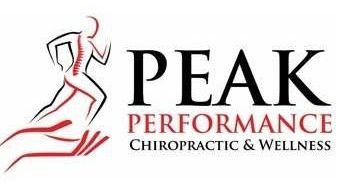Ice vs Heat

When it comes to managing pain and injury, the age-old debate of ice versus heat often leaves people scratching their heads. Should you reach for that bag of frozen peas or the cozy heating pad? Understanding when and why to use ice or heat can make a significant difference in your recovery process.
The Basics of Inflammation
To decide whether ice or heat is the best choice for your pain, it's essential to understand what happens in your body when you're injured. Inflammation is the body's natural response to injury or irritation. It's part of the healing process, where your immune system works to repair damaged tissues. This process often leads to swelling, redness, warmth, and pain—classic signs of inflammation.
When you injure yourself, your body sends extra blood flow to the area, which brings with it essential nutrients and immune cells to help with repair. While this is a crucial part of healing, the increased blood flow can also contribute to swelling and discomfort.
The Chill Factor: Why Ice Helps
Applying ice or a cold compress to an injury can be incredibly effective in managing pain, especially in the first 48 hours after an injury. Here's why:
- Reduces Swelling: Ice causes blood vessels to constrict, which reduces the amount of blood flow to the injured area. This helps to minimize swelling and inflammation.
- Numbs the Area: Cold temperatures can numb the affected area, providing temporary pain relief. This is particularly helpful for acute injuries like sprains or strains.
- Decreases Metabolism: Ice slows down the metabolic rate of cells in the injured area. By reducing the cells' activity, it helps prevent additional damage.
When using ice, apply it for 15-20 minutes at a time, with a layer of cloth between the ice and your skin to prevent frostbite. Repeat this process several times a day as needed.
The Warm Embrace: Why Heat Helps
Heat therapy can be beneficial for pain relief, but it's best used for different situations compared to ice. Heat is often more effective for:
- Relaxing Muscles: Heat increases blood flow to the area, which helps relax tight muscles and soothe stiffness. It's particularly useful for chronic muscle pain or tension.
- Improving Flexibility: Heat can improve the elasticity of connective tissues, which helps increase your range of motion. This can be helpful for conditions like arthritis or for muscle recovery after exercise.
- Enhancing Circulation: By dilating blood vessels, heat improves blood flow and helps with the healing process of chronic injuries or soreness.
Apply heat using a warm compress, heating pad, or warm bath for 15-20 minutes at a time. Be cautious not to use heat on new injuries or areas with swelling, as it can exacerbate the problem.
A Balanced Approach
In some cases, alternating between ice and heat can provide comprehensive relief. This method, known as contrast therapy, involves applying ice for 15 minutes, followed by heat for another 15 minutes. This approach can help manage pain and swelling while promoting healing.
Incorporating Chiropractic and Massage Therapy
While ice and heat can offer significant relief, they are just one piece of the puzzle in managing pain and injury. Chiropractic care and massage therapy can complement these treatments by addressing the root causes of discomfort.
If your pain persists or you're unsure of the best approach for your condition, it's a good idea to consult with your provider. They can assess your specific situation and provide personalized treatment plans that incorporate a combination of therapies, including ice and heat, to help you recover more effectively.
In the end, using ice or heat correctly, in conjunction with professional care, can significantly enhance your recovery process. Whether it's managing acute injuries or addressing chronic pain, your chiropractor or massage therapist can guide you in choosing the most effective strategies for your healing journey. Come visit your Buffalo chiropractors and licensed massage therapists here at Peak Performance!
Bethany Wolcott
D’Youville Chiropractic ‘26












